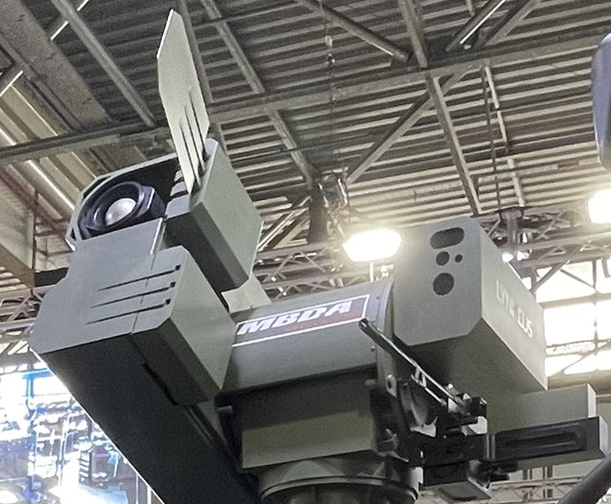
A major European defense firm has landed a pivotal contract to upgrade a next-generation missile system, a move poised to transform how modern armed forces engage threats in combat.
On June 19, 2025, NEODE Systems—a startup launched by European missile leader MBDA—secured its inaugural contract with France’s Direction Générale de l’Armement (DGA). The agreement focuses on enhancing the Akeron MP missile by integrating an advanced artificial intelligence system known as Ground Warden.
This strategic upgrade is designed to improve the missile’s capacity to strike targets beyond the operator’s line of sight. It reflects France’s commitment to maintaining a competitive edge in military technology amid intensifying global advancements. The contract includes a series of live-fire evaluations slated for completion by the end of the year, signaling a potential leap in precision engagement for the French Army.
The Akeron MP is a fifth-generation, shoulder-launched missile capable of engaging various targets, including armored vehicles, bunkers, and personnel. With a tactical launch weight of roughly 33 pounds, it utilizes a dual-phase solid-propellant rocket motor to hit targets at distances of up to 5 kilometers.
Equipped with a dual-mode seeker that combines visible-spectrum TV and uncooled infrared sensors, the system supports several targeting modes, such as fire-and-forget and lock-on before or after launch. Its versatility makes it an essential asset for both dismounted soldiers and mechanized units. In service with French forces since 2018, it has also been exported to partners like Egypt and Ukraine.
The missile features a lightweight composite airframe and foldable control surfaces, making it highly portable. Its fiber-optic guidance system streams live video to the operator, allowing real-time mid-flight corrections for increased accuracy, especially against mobile targets.
This was demonstrated in March 2024 during the U.S. Army’s Project Convergence Capstone 4, where the Akeron MP successfully executed a beyond-line-of-sight (BLOS) strike by using onboard inertial navigation to acquire a target post-launch.
Central to NEODE’s new contract is the integration of Ground Warden, an AI-powered module that augments the missile’s effectiveness by providing real-time tactical intelligence. This compact computing unit, weighing under 4.5 pounds and consuming less than 20 watts, connects directly to the Akeron launcher.
Ground Warden processes live data streams from sources such as the missile seeker, UAVs, and other intelligence, surveillance, and reconnaissance (ISR) systems. It then delivers actionable insights to soldiers through a rugged tablet interface.
By fusing visual feeds and sensor input, it compares offboard imagery with the missile’s onboard data and calculates the likelihood of successful strikes based on parameters such as range, terrain, and time to impact. This significantly increases the operator’s ability to engage concealed or distant targets while minimizing exposure to enemy fire.
At the 2024 Eurosatory defense expo in Paris, MBDA showcased Ground Warden working in tandem with a UAV to identify and eliminate a simulated tank several kilometers away, emphasizing the system’s battlefield utility.
This marks a critical milestone for NEODE Systems, which was established in early 2024 to accelerate MBDA’s development of digital and AI capabilities. The startup’s nimble model—focused on short innovation cycles and tight collaboration with military users—has produced rapid results.
The scheduled test launches later this year will assess Ground Warden’s performance and determine its suitability for wider deployment by the French Army. Success could enable France to better counter diverse threats ranging from IEDs to heavily armored units in dynamic combat zones.
“This inaugural contract validates NEODE Systems’ approach of rapid, customer-involved development and disruptive technologies like AI,” said NEODE CEO Laurent Duport in a statement published by MBDA.
The Akeron MP’s ongoing upgrades represent a shift in warfare priorities, favoring agility, precision, and connectivity. Unlike older systems such as the U.S.-developed TOW missile, which requires wire guidance and line-of-sight targeting, the Akeron MP’s BLOS capabilities allow strikes from concealed positions—an advantage in dense urban or uneven terrain.
While the U.S. Javelin missile offers a similar fire-and-forget function, it lacks the Akeron’s fiber-optic feedback, which enables real-time trajectory corrections. In contrast, Russia’s 9M133 Kornet missile, although effective at similar ranges, relies on laser guidance and is more vulnerable to electronic interference. China’s HJ-12, while technologically advanced, has limited battlefield validation.
France’s investment in Ground Warden fits into a broader modernization strategy outlined in its 2024–2030 Military Programming Law, which earmarks €10 billion for innovation, especially in AI and autonomous systems. The Army has placed a growing emphasis on integrated, networked warfare through platforms like the Jaguar EBRC—a high-tech reconnaissance vehicle equipped with cutting-edge sensors.
During missions in Mali’s Sahel region, French troops often encountered ambushes from agile insurgents, exposing the limitations of traditional line-of-sight weapons. The combination of Akeron MP and Ground Warden offers a solution by enabling engagements from safer distances, using ISR assets like drones for target acquisition.
This potential was highlighted in 2021 during the EU’s LynkEUs project, when a UAV-guided Akeron MP successfully hit a target 8 kilometers away, showcasing its precision and coordination with external sensors.
Beyond ground operations, the Akeron MP has also been adapted for naval use. In late 2023, the French Navy conducted successful tests launching the missile from ships, demonstrating its flexibility across domains. MBDA is also investigating integration with loitering munitions and allied drone platforms, expanding the missile’s operational reach.
At Eurosatory 2024, MBDA exhibited a multi-domain solution featuring a 4×4 vehicle outfitted with Akeron launchers and reconnaissance drones, signaling future deployment scenarios involving AI coordination.
The drive for AI integration mirrors global defense trends. The U.S. has invested heavily in AI programs like Project Maven, which analyzes drone footage, though such initiatives have stirred ethical debate. Russia’s autonomous Marker ground vehicle, while AI-enabled, has struggled in conflict zones due to poor reliability. China’s defense AI initiatives remain opaque but are progressing.
France has opted for a “trusted AI” approach that maintains human oversight—a stance reaffirmed by NEODE’s CEO. “We believe AI still requires human supervision,” Duport noted at Eurosatory, highlighting France’s cautious optimism.
Despite its potential, Ground Warden faces obstacles. Electronic warfare threats—especially GPS jamming, as seen in Ukraine—could hamper AI-guided systems. Additionally, the French Army’s SCORPION initiative, which aims to digitize and connect ground forces, has faced infrastructure delays that may affect Ground Warden’s integration.
Skepticism may also arise from the system’s rapid development timeline—just six months—especially given past European defense projects like the FREMM frigate, which experienced delays and budget overruns.
The deal reflects MBDA’s broader ambition to sustain Europe’s defense innovation. Owned jointly by Airbus, BAE Systems, and Leonardo, the company employs more than 13,000 people and earned €4.5 billion in 2023. Its focus on AI and open systems aligns with NATO’s interoperability goals.
On June 17, 2025, MBDA also signed a framework agreement with NATO’s Support and Procurement Agency (NSPA) to simplify logistics and maintenance for the Akeron MP across alliance members. “This agreement sets the stage for wider NATO deployment,” said NSPA’s General Manager Stacy Cummings.
France has long used its defense sector to assert strategic independence, especially in an increasingly volatile geopolitical landscape. The Akeron MP’s deployment in Ukraine, where it’s been used against Russian armor, has further solidified its battlefield reputation.
Programs such as the Future Combat Air System (FCAS) and Main Ground Combat System (MGCS)—both AI-heavy initiatives—underscore France’s commitment to staying ahead. Unlike Germany’s slower procurement processes, France’s use of agile ventures like NEODE may offer a faster route to innovation.
Upcoming trials will serve as a litmus test. A strong performance could position Ground Warden as a revolutionary tool for modern combat. Failure, however, would raise doubts about the readiness of AI on today’s battlefield. The outcome may influence not only French defense policy but NATO’s broader adoption of next-generation technologies.




